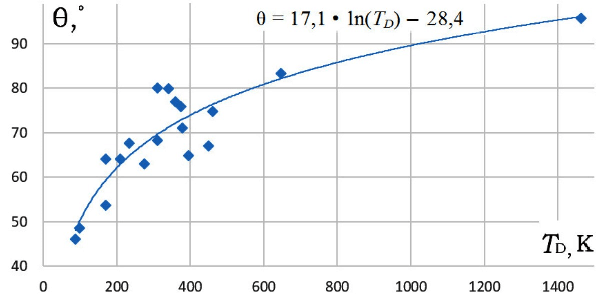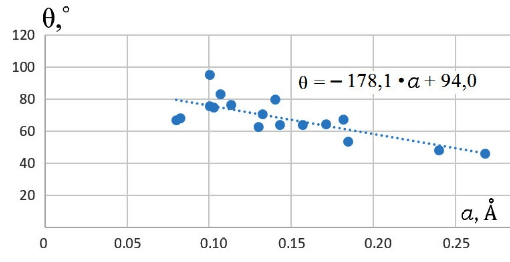The properties of coatings designed to protect aircraft from icing have been modeled.
The results of the research have been published in the journal "Scientific Bulletin of MGTU GA".
Icing refers to the process of ice formation on the surfaces of aircraft, leading to negative consequences. Ice accumulations increase the mass of the aircraft, disrupt the operation of sensors in flight navigation instruments, and alter the geometric shape of the wing, thereby worsening its aerodynamic characteristics. As a result, flights become more costly due to accelerated depreciation and increased fuel consumption, and most importantly, they become unsafe.
Icing occurs when the structural elements of the aircraft collide with droplets of supercooled water present in the atmosphere, meaning water that does not freeze at temperatures below 0 degrees. It is important to note that the crystallization of liquids depends not only on temperature but also on pressure, the presence of impurities, and a number of other factors. Therefore, in clouds, water can exist in a liquid state even at -39 degrees. The likelihood of icing on the aircraft is determined by meteorological conditions and significantly increases at atmospheric fronts—transitional zones between air masses that have different temperatures, pressures, and humidity.
Hydrophobic coatings, which also reduce friction resistance, help prevent icing on aircraft. However, their use is associated with a number of problems. In particular, water can penetrate the pores of the coatings, significantly weakening their hydrophobic effect, and additionally contribute to the deposition of organic compounds and the development of microorganisms in these areas. Nevertheless, undesirable phenomena do not always occur, but only under certain conditions. The size and speed of the droplets, as well as the shape, material, and roughness of the aircraft's parts, play an important role in their occurrence. To expand the capabilities of controlling the interaction between liquids and solid bodies, scientists from MIPT and TsAGI have developed mathematical models that allow predicting the properties of hydrophobic coatings based on their composition and surface geometry.
“Using mathematical and computer modeling methods, we described the liquid flow patterns around a hydrophobic body containing air in its pores,” says Maxim Kudrov, director of the Institute of Aeromechanics and Aircraft Engineering at MIPT. “Using the models, we calculated the values of the coefficients of molecular speed change upon collision.”
“We derived original expressions for calculating the coefficients of liquid molecules rebounding from the surface of a solid body based on its physical properties and temperature,” adds Ivan Amelyushkin, a programmer at the Institute of Aeromechanics and Aircraft Engineering at MIPT.
During the research, the scientists tested the developed mathematical models. By studying literature sources, they gathered and processed a large dataset on the interaction of water with substrates made from various materials. Special attention was paid to the patterns of change in the contact angle of wetting θ, defined as the angle between the solid surface and the tangent line drawn to the surface of the liquid droplet. The larger the contact angle θ, the greater the water-repellent effect of the surface, so it was essential for the scientists to find ways to increase the angle θ.
They established that the contact angle θ of a flat surface significantly depends on the Debye temperature TD (K). This dependence can be approximately described by a logarithmic curve around the experimental points (Figure 1).

“We showed that the contact angle of wetting for a flat coating increases with the Debye temperature of that coating,” says Ivan Amelyushkin.
It should be emphasized that in a solid body heated to the Debye temperature TD, all the intrinsic vibrations of the particles, in this case, atoms, are excited. Consequently, the Debye temperature TD, along with the molar mass of the coating material M (kg/mol), determines the amplitudes α (Å) and frequencies of oscillations ω (s-1) of the atoms. These values, in turn, condition the momentum exchange and bond formation during the interaction of substrate atoms with water molecules. In other words, the amplitudes α and frequencies ω of the atomic vibrations determine the water-repellent properties of the coating.
Moreover, the contact angle θ of the substrate with water has a relationship that is close to linear (Figure 2) with the radius of the atoms forming it rA (Å) and the amplitude of their vibrations α. The characteristics of atomic vibrations depend on the crystal lattice of the material.

The mathematical models developed by the scientists will be used to address the problems of icing on aircraft and reducing friction. This will enable a proper and justified selection of hydrophobic coating materials, minimizing the risk of emergency situations and flight costs.